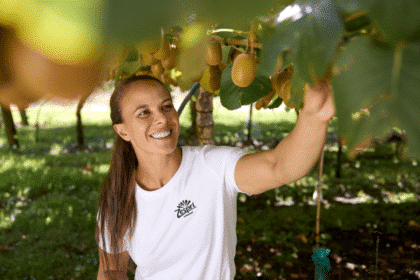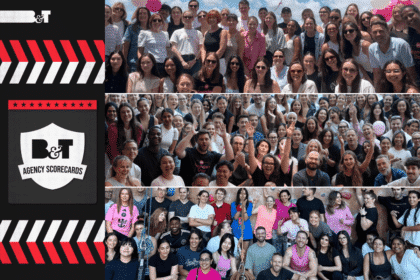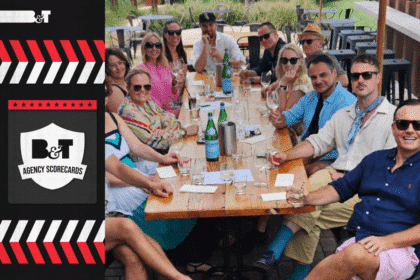In this guest spot, The Tall Planners, Kate Smither shares with B&T about what the next wave of consumerism is going to look like.
Human beings love a bit of hedonistic behaviour occasionally. But, for the last two years, the world (and pleasure) has been put on hold. It has seen a day to day where inaction has become more common than action and delays have become expected. It has been a world where tragedy has replaced joy. Two years on hold has resulted in a today marked by pent up emotions, pent up energy and the stalled pursuit of pleasure.
Consumerism has gone through stages that mirror the different types of hedonism. From egoism to utilitarianism and everything in between. So, when it comes to understanding the next wave of consumerism framing it up through the lens of hedonism, sheds some light.
The question is, how will this pent-up consumer energy manifest? Will it release as unadulterated hedonism? or will it be a more cautious, more careful pursuit of something more significant and accessible?. And for our industry, how will brands, advertising and marketing respond to a new consumer mindset whichever way it reveals itself?
Experts in the science of brands can assert this with more authority than I can, but I think there has been a shift in hedonism and our consumerist tendencies. I think our relationship with brands has changed forever. I think we are entering a new era of the more pragmatic, more realistic consumer, where brands are no longer being looked at as advertising one-night stands. They are being seen as more enduring, more authentic and this is ringing in a new era of long-term brand building.
Back in the Gordon Gekko days of “greed is good”, hedonism and revelling in everything excessively without control defined what is now seen as the “golden age” of consumerism. The days when advertising just had to drive desire and the consumer craved more and more. They lapped up the new and success was marked by the things they had. It was an era of hedonistic egoism. But this mindset could never last. It had to max out before competition and craving consumed itself.
With financial collapses in the decades that followed, consumerism swung back the other way and the: “austerity” era entered. Marked by a lack of fanfare and a consumer “weightiness” it held people back. But, there are no signs of that the same weightiness rising again in 2022. The whole world has been paused and this mutuality of experience, is making people reframe everything, consumerism included. It’s not making them stop. It’s making things such as hedonism less about self and more about a utilitarian collective. More about happiness for all as an aim.
The language of this new “middle ground hedonism” relies on words like happiness, nurturing, joy, comfort, empathy. All very fundamental human needs and emotions. All very shared and less “me”. They show a shift in aspiration towards more realistic and more meaningful products and people. They show what people are craving rom brands, more empathy, more humanity.
This new realism is echoed in the 3 big trends that Accenture identified coming out of the pandemic. “A retreat to local and the desire to maintain the connections people have developed, a more conscious consumerism and awareness of the social impact and (finally) an increasing focus on health”. Together these trends show a more collective and aware consumer, a consumer trained into a scarcity mindset rather than one of abundance. A consumer who is more aware than the ones who came before and for whom happiness is as great a thrill as unadulterated pleasure.
So where does advertising sit in this more pragmatic world?
Advertising still has to entertain, and it still has to drive desire and meet consumer needs, It still has to even be a bit sexy. None of that has gone away. It just needs to do it in an accessible, more enduring way. It needs to deliver it in a way that is true of the brand and that these more realistic and self-aware consumers can’t (and won’t) call bullshit on
Analysis from Depsoitphotos published in The Drum gives a small peek into the way creativity is starting to respond to the craving for happiness and contentment in the aesthetics of communications. It is showing up in what they call the meeting of the “old and the new”. They suggest that 2022 will be the year where the future and the past co-exist and stand side by side. They cite a rise in searches for pastel images, psychedelic 70’s inspiration and even an increase of 383% in the number of searches for “candid faces” as clues to this new relevance
If the early ads from the Superbowl are anything to go by, this “retrofuturistic” co-existence of future and past is playing out in the big brand ads we’ll all be looking at in the next few weeks.
From a reunion of Austin Powers to the “being themselves” lives of celebs (in Amazon Alexa) to harking back to brand icons from Budweiser, brands are projecting happiness that eases people back into life with a degree of familiarity and playfulness.
In the spirit of the realistic yet still aspirational, there are three examples that stand out, Booking.com, Expendis and UberEats.
Booking.com, with its Idris Elba led, very honest presentation of the brand, sells not the dream of travel, but it sells the very grounded “does what it says on the tin” expertise. UberEATS shows a similar honesty. In its “Don’t eats” work, it brings a smile to viewers by not hiding from its own branding confusion, instead just having some fun with it. Finally, there is the accurately entitled “Stuff” from Expedia where Ewan McGregor delivers an ode to the practical approach of a new consumer mindset.
A brilliant planner I used to work with had a phrase that feels like the best advice to brands and marketers right now, the phrase was “pull yourself towards yourself”. Not let yourself go crazy and lose yourself, not even pull yourself together but instead a call to really understand who you are and why you exist. To take the time to understand your DNA and what is fundamentally your difference.
The brands that have spent the time “pulling themselves towards themselves” over the last couple of years will be the ones that let people show their hedonistic sides in a careful, conscious way.
These are the brands that will grow in the long term and build trust along the way. These are the brands that are a match fit for a new wave of consumer passions coming their way.








